Leading up to the opening of the Learning Commons, we’ve spoken in broad terms about the impact of having a suite of student resources and services co-located for ease of access and use, and how that convenience is expected to improve student outcomes. Much of the talk regarding that impact of the Learning Commons has centered on the process and completion of finished products of a more temporal nature such as reports, projects and other assignments, but beyond the resources — technical help, knowledge resources and technology — that will serve as the basis for user productivity, it’s worth considering the persisting influence that the learning opportunities supported by the new space will provide to the next generation of Longhorns.
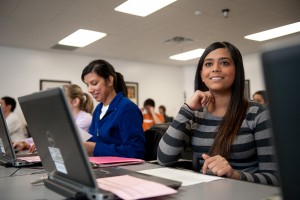 Staff in the Libraries’ Teaching and Learning Services (TLS) unit has played a central role in planning the Learning Commons, and their activities will have a significant impact on the success of the initiative. The longstanding relationship between TLS and the University Writing Center was essential to the relocation of UWC to the Perry-Castañeda Library, and much of the vitality in the Learning Commons will be determined by how the partnership between the two groups evolves over time. UWC’s nascent presence has already reaped ideas for collaborating with the Libraries on programming in the new space, and coordinating with other student resources around campus — such as the Sanger Learning Center — will allow a crossover between the provisional service needs of users for the purpose of completing assignments and the generation of lasting skills like interviewing, public speaking, information literacy, and much more.
Staff in the Libraries’ Teaching and Learning Services (TLS) unit has played a central role in planning the Learning Commons, and their activities will have a significant impact on the success of the initiative. The longstanding relationship between TLS and the University Writing Center was essential to the relocation of UWC to the Perry-Castañeda Library, and much of the vitality in the Learning Commons will be determined by how the partnership between the two groups evolves over time. UWC’s nascent presence has already reaped ideas for collaborating with the Libraries on programming in the new space, and coordinating with other student resources around campus — such as the Sanger Learning Center — will allow a crossover between the provisional service needs of users for the purpose of completing assignments and the generation of lasting skills like interviewing, public speaking, information literacy, and much more.
TLS emerged in 2002 — at the time designated Library Instruction Services — to take the place of the Digital Information Literacy Office (DILO) and expand on its mission to integrate information literacy into the campus-wide curriculum for general education, which it successfully accomplished in 2010. The unit’s name evolved to Teaching and Learning Services as its mission has expanded to represent a more comprehensive view of the academic landscape and the ways in which students and faculty interact to share knowledge and experience.
By its increased involvement in campus curriculum via information and digital literacy, TLS has routinely collaborated with faculty on assignment design and presents course-integrated classes in hands-on classrooms in the libraries. They’ve also created video tutorials on subjects such as avoiding plagiarism for integration into course web sites and embedding in online courses. Through a combination of these methods, TLS now reaches almost 3,000 lower division undergraduates every year.
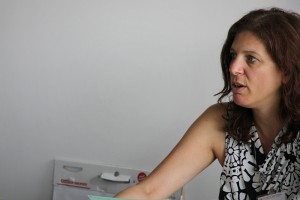 “The Learning Commons isn’t just about co-locating academic support services for ease of access but is about collaborating in new ways across those departmental lines to better support teaching and learning,” says Michele Ostrow, head of the Libraries’ Teaching and Learning Services unit. “We’re fortunate to work closely with a lot of fantastic faculty who teach in our freshmen programs and are committed to helping the excellent high school students who get into UT become excellent college students.”
“The Learning Commons isn’t just about co-locating academic support services for ease of access but is about collaborating in new ways across those departmental lines to better support teaching and learning,” says Michele Ostrow, head of the Libraries’ Teaching and Learning Services unit. “We’re fortunate to work closely with a lot of fantastic faculty who teach in our freshmen programs and are committed to helping the excellent high school students who get into UT become excellent college students.”
TLS has also been responsible for implementing an ever-evolving program of free, drop-in classes for anyone that also supplement classroom learning with practical skills training and pedagogy in areas related to the research process, software and web usage, preservation, media development and many other areas that are outside of, but essential to student success.
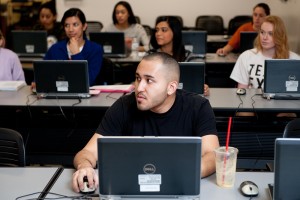 Through its efforts to date, TLS organizes and offers over 700 classes annually, with combined attendance of more than 15,000. With the opening of the Learning Commons, Teaching and Learning Services will be more visible, more integrated and more dynamic, so an already robust resource for students hopes to be an even more fundamental part of the learning calculus at the university.
Through its efforts to date, TLS organizes and offers over 700 classes annually, with combined attendance of more than 15,000. With the opening of the Learning Commons, Teaching and Learning Services will be more visible, more integrated and more dynamic, so an already robust resource for students hopes to be an even more fundamental part of the learning calculus at the university.
No longer relegated to sequestered spaces hidden in out-of-view classrooms with middling technology, TLS classes and community engagement efforts will be moving into a series of spacious and open tech-rich learning labs on the main floor of UT’s largest and most heavily-trafficked library. The increased visibility of the group’s activities — workshops, classes, events and interactions with faculty and other campus partners — will help to highlight the Libraries growing impact on improved learning outcomes for the students of the university, and challenge notions about the library as solely a warehouse of informational resources where users are the only ones who play an active role.
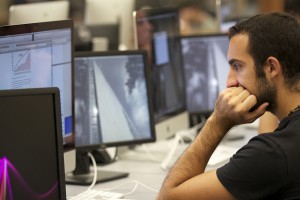 “Being a good researcher is more than having great collections at your fingertips,” explains Learning Programs Librarian Elise Nacca. “The Learning Commons allows us to bring in expertise from all over campus in order to support students more holistically. The library is special place on campus already – it’s not home and it’s not the classroom. It’s a place of scholarship, collaboration, contemplation and discovery.”
“Being a good researcher is more than having great collections at your fingertips,” explains Learning Programs Librarian Elise Nacca. “The Learning Commons allows us to bring in expertise from all over campus in order to support students more holistically. The library is special place on campus already – it’s not home and it’s not the classroom. It’s a place of scholarship, collaboration, contemplation and discovery.”
The expansion of the Media Lab to feature 44 workstations will also put TLS staff in the center of managing a modern production space, but with the added mission of providing support and guidance to users who may be unfamiliar with certain software or media tools.
Andrew Wilbur, who serves as the Media Lab Manager, is enthusiastic about the potential for the new space.
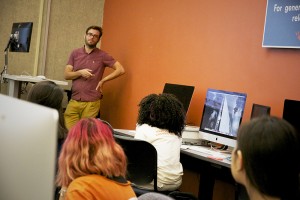 “We need to remember that although current students are members of a technologically sophisticated generation, a lot of technologies still come with a steep learning curve, and to be competitive in academic or professional work one really needs training beyond the basics,” says Wilbur. “In an environment like the Media Lab, or the Learning Commons more generally, they can learn from each other, from our workshops and through the assistance of our interns.”
“We need to remember that although current students are members of a technologically sophisticated generation, a lot of technologies still come with a steep learning curve, and to be competitive in academic or professional work one really needs training beyond the basics,” says Wilbur. “In an environment like the Media Lab, or the Learning Commons more generally, they can learn from each other, from our workshops and through the assistance of our interns.”
“The Media Lab will also help support faculty that are changing the way they teach,” adds Cindy Fisher, Learning Technologies Librarian. “In lieu of written research papers, professors may assign their students to create short documentaries, podcasts, or multimedia projects to demonstrate mastery. By providing access and learning support to fulfill these assignments, we hope the campus will see the Libraries as a place that adapts to changing pedagogy because we care deeply about student achievement.”
In order to ensure that efforts in the Learning Commons adapt to changes in the learning environments at UT, TLS will be constantly assessing the value and outcomes of their efforts.
“A focus on learning rather than teaching seems to be a trend in and of itself within libraries,” explains Krystal Wyatt-Baxter, Learning and Assessment Librarian. “This ties into assessment because while it’s easy to know what we teach, it’s much more difficult to determine what students are learning. Learning outcomes assessment can help us find out.”
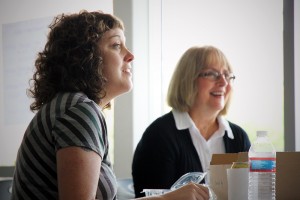 While the Learning Commons will be defined in large part by its status as a one-stop shop for resources and services, the involvement of Teaching and Learning staff will guarantee that the Libraries play an active role in student success through a personal involvement in the learning process for all students on the Forty Acres.
While the Learning Commons will be defined in large part by its status as a one-stop shop for resources and services, the involvement of Teaching and Learning staff will guarantee that the Libraries play an active role in student success through a personal involvement in the learning process for all students on the Forty Acres.
“Many places on this campus are devoted to Colleges and programs, but the Learning Commons will be accessible and welcoming to anyone who enters,” says Krystal Wyatt-Baxter. “I hope the campus community uses it as a place to make the kinds of connections and collaborations that lead to deeper learning.”

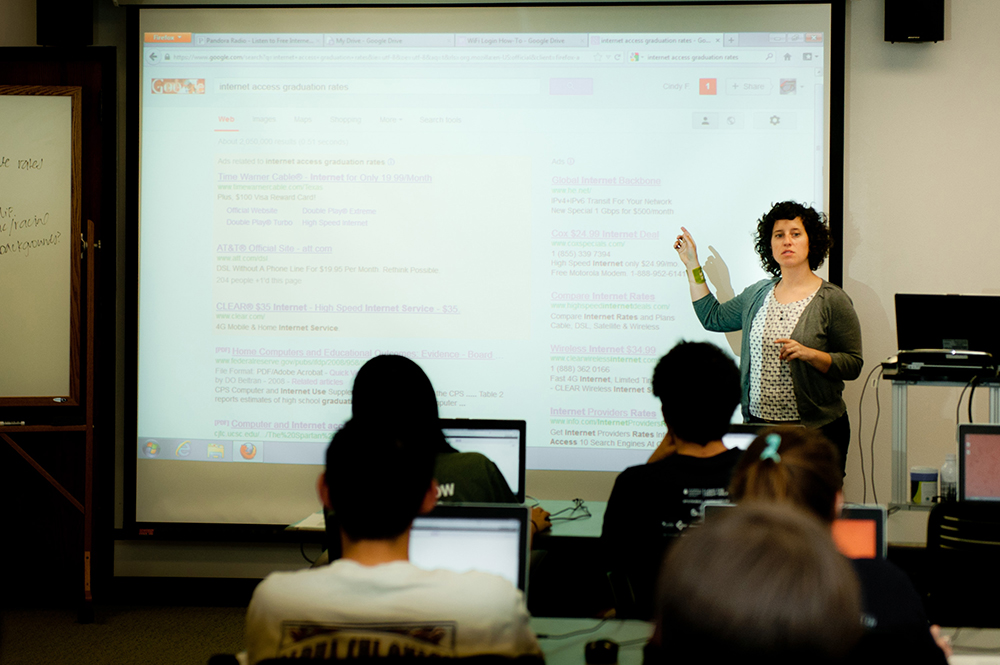
A focus on learning rather than teaching seems to be a trend in and of itself within libraries, nice